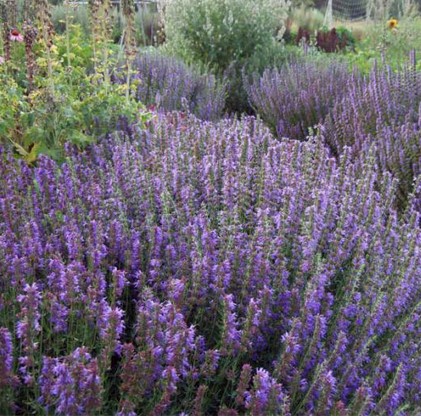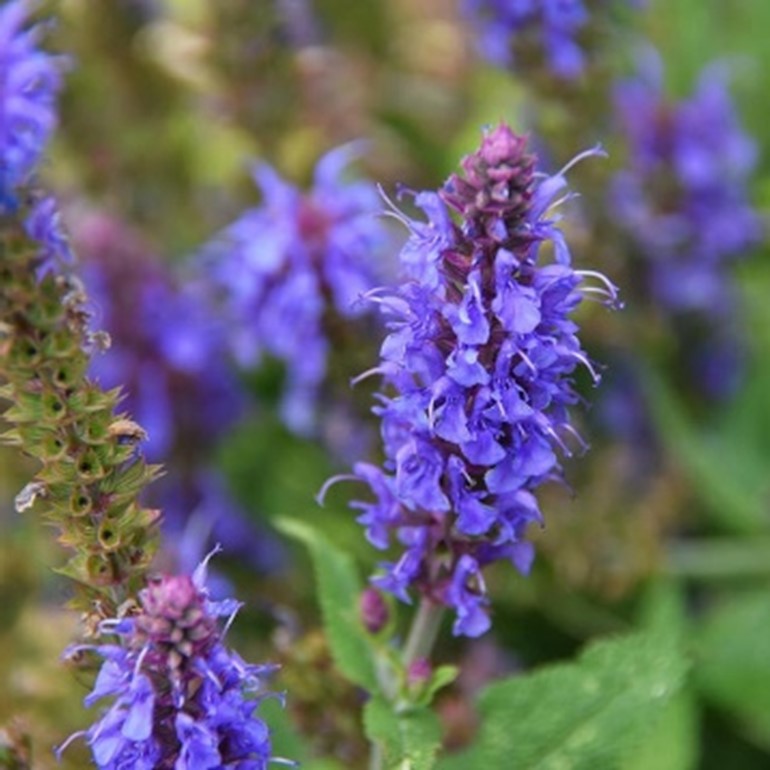Hyssop
Hyssopus officinalis


Characteristics
- Type: Perennial Herb
- Zone: 4 – 9
- Height: 1.5 – 2 Feet
- Spread: 1 – 1.5 Feet
- Bloom Time: June – September
- Bloom Description: Purple-Blue
- Sun: Full Sun – Part Shade
- Water: Dry – Medium
- Maintenance: Low
- Flower: Showy, Fragrant
- Leaf: Fragrant
- Attracts: Butterflies, Bees
- Tolerate: Deer, Drought, Erosion, Dry Soil, Shallow-Rocky Soil
Culture
Hyssop grovs easily in average, dry to medium moisture, well-drained soils in full sun to part shade. Generally, appreciates some afternoon part shade in hot summer climates. Thrives with regular watering, but established plants have respectable drought tolerance. Plants perform well in poor soils including dry, sandy ones, but generally prefer well-draining, fertile loams. Prune back foliage in early to mid-spring. May be grown from seed sown in early spring. Plants will self-seed in the garden. Plants are evergreen subshrubs in warm winter climates. Propagate by division in spring, cuttings or seed.
Noteworthy Characteristics
Hyssopus officinalis, commonly called hyssop, is an aromatic, semi-evergreen, woody-based, shrubby perennial that grows in an erect bushy clump to 18-24” tall. It is frequently grown in herb gardens and as an ornamental. It is native to the northern Mediterranean coast and Asia Minor, but has naturalized along roads in some parts of the U.S. It features narrow, stalkless, toothed, aromatic, shiny dark green leaves (to 1” long). Fragrant, two-lipped, tubular, purple-blue flowers with protruding stamens bloom in whorls on long dense terminal spikes in mid to late summer. Foliage, flowers and plant oils have a long history of culinary and folk medicine uses. Leaves have been and still are used in cooking to flavor such things as meats, soups, sauces, salads or stews. Hyssop oil is currently used as a flavoring agent in Chartreuse liquor. Plants are attractive to bees and butterflies.
Problems
No serious insect or disease problems.
Garden Uses
Herb garden, rock garden or border. Specimen or group. Clip for low hedge or edger. Containers. Leaves and flowers may be harvested for use in cooking or dried for use in potpourris.
Courtesy of Missouri Botanical Garden Plant Finder